Introduced at the 2007 North American International Auto Show, the fourth-generation Dodge Viper (ZB II) marked a significant evolution in the model’s lineage. Produced from 2008 to 2010, this iteration retained the Viper’s iconic aggressive styling while incorporating substantial mechanical enhancements.
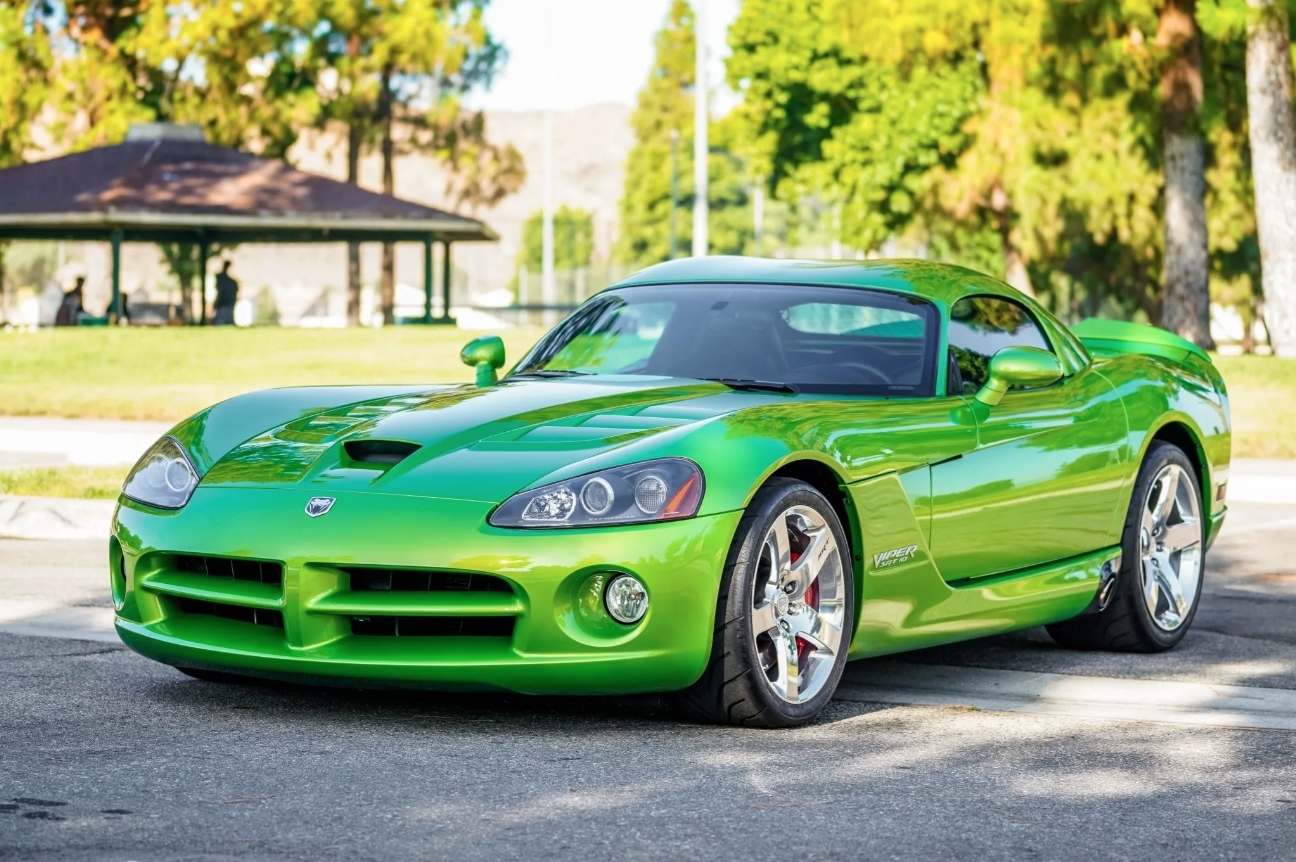
Photo by Bring a Trailer
At its core, the ZB II houses an 8.4-liter V10 engine, developed in collaboration with McLaren Automotive and Ricardo Consulting Engineers. This powerplant delivers 600 hp at 6,100 rpm and 560 lb-ft of torque at 5,000 rpm.
The engine features better-flowing heads with larger valves, Mechadyne cam-in-cam variable valve timing on the exhaust cam lobes, and dual electronic throttle bodies. These enhancements contribute to a 0-60 mph acceleration time of approximately 3.6 seconds and a top speed of 202 mph for the coupe.
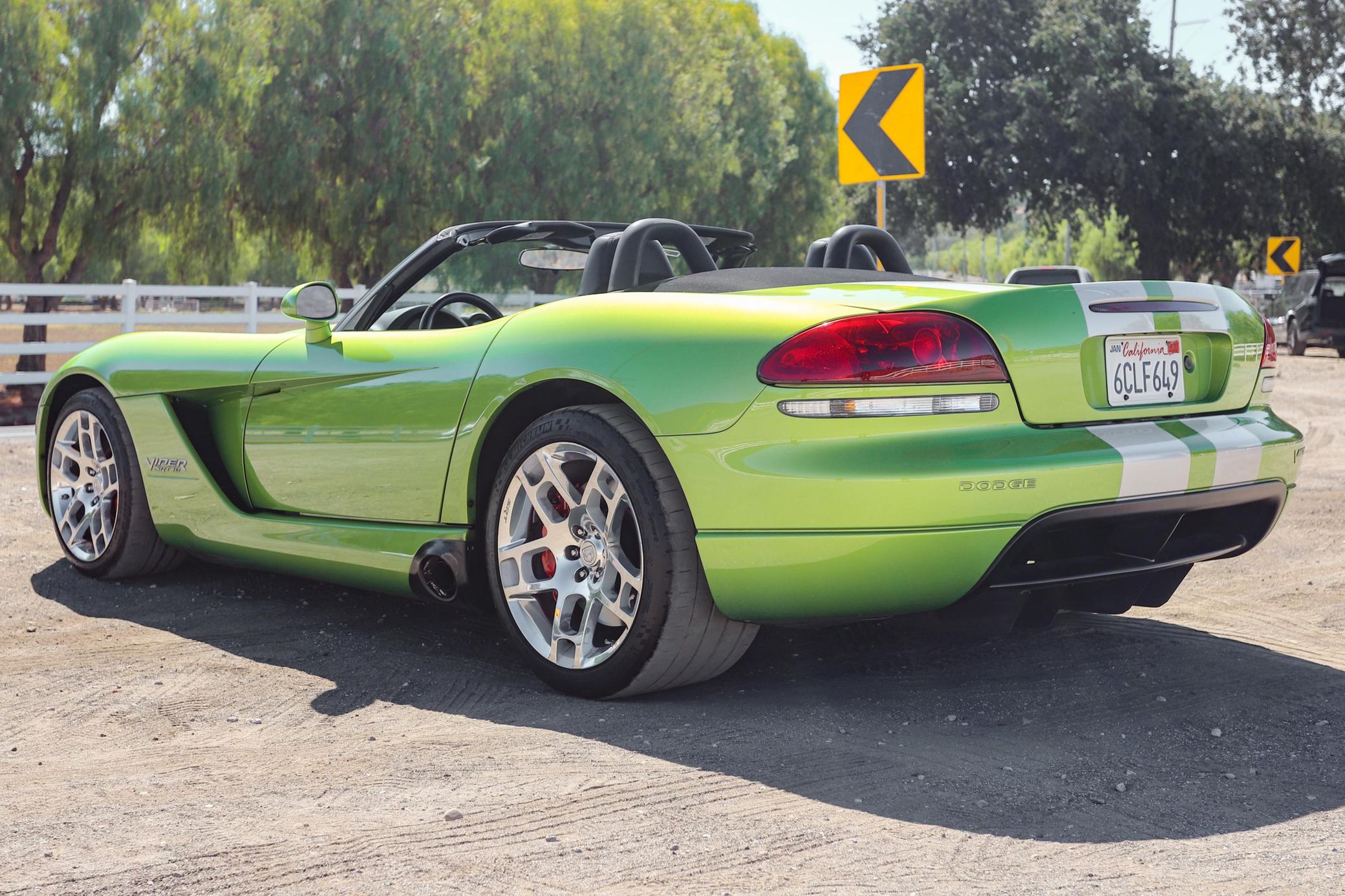
Photo by Cars and Bids
Externally, the fourth-generation Viper maintained its signature muscular stance, with notable updates including a vented engine cover to enhance cooling and aerodynamics. The design preserved the Viper’s aggressive aesthetic, characterized by its low profile, wide track, and sweeping curves.
Inside, the Viper offered a driver-centric cockpit emphasizing performance and functionality. The interior featured bolstered seats upholstered in black leather with micro suede inserts, a matching dash, center console, door panels, and carpets.
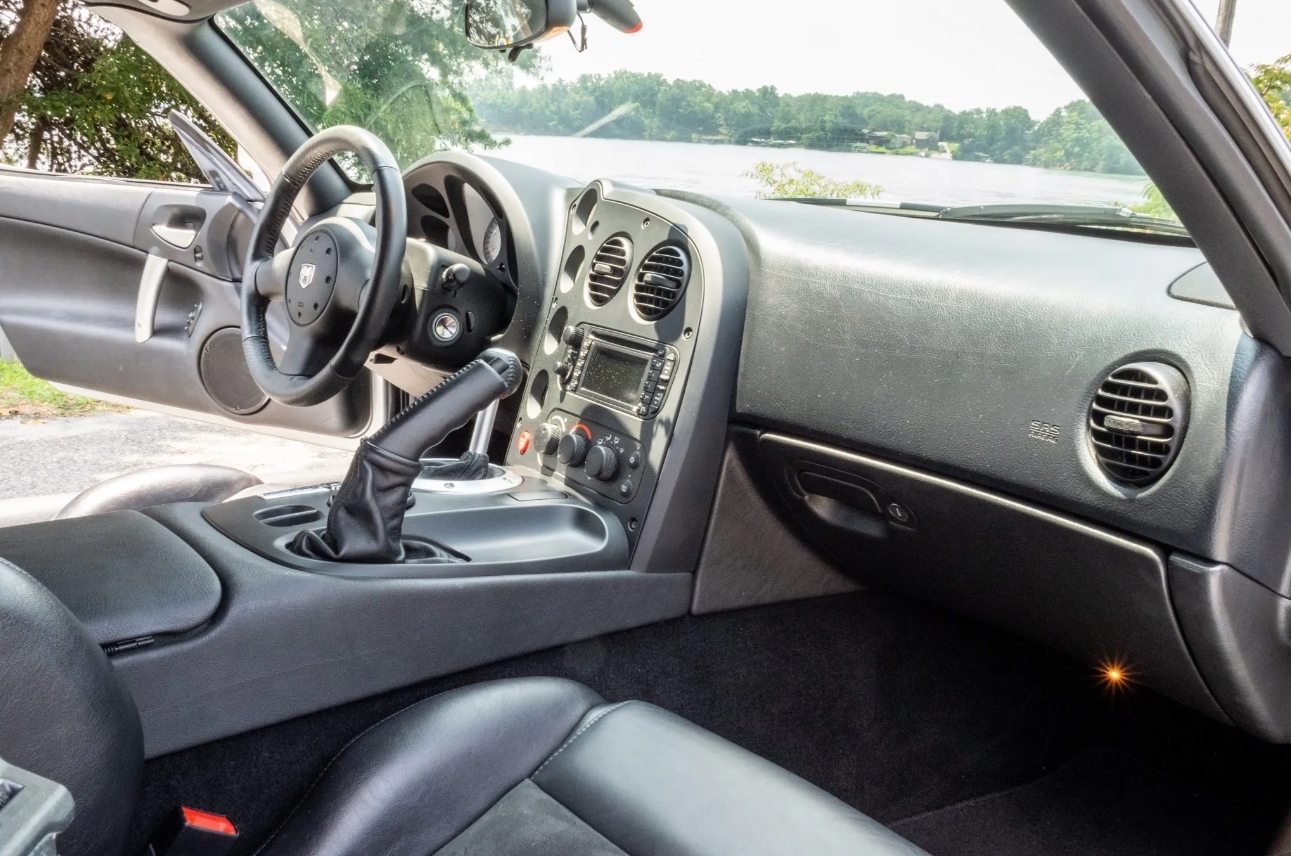
Photo by Bring a Trailer
Amenities included power accessories, air conditioning, power-adjustable pedals, a seven-speaker Alpine audio system with subwoofers, and an AM/FM/CD stereo.
In the high-performance sports car segment, the fourth-generation Dodge Viper faced competition from formidable rivals such as the Chevrolet Corvette Z06, Nissan GT-R, and Porsche 911 GT3. Each of these competitors offered their unique blend of performance, design, and driving dynamics, contributing to a fiercely contested market landscape.
Model Changes (Breakdown by Year)
2008 Dodge Viper
In 2008, the Dodge Viper underwent significant enhancements that elevated its performance and design. The V10 engine’s displacement was increased to 8.4 liters, resulting in an output of 600 hp and 560 lb-ft of torque.
Complementing this power boost, Dodge introduced an upgraded Tremec six-speed manual transmission, the TR-6060, which featured improved gear synchronizers for smoother and more precise shifts.
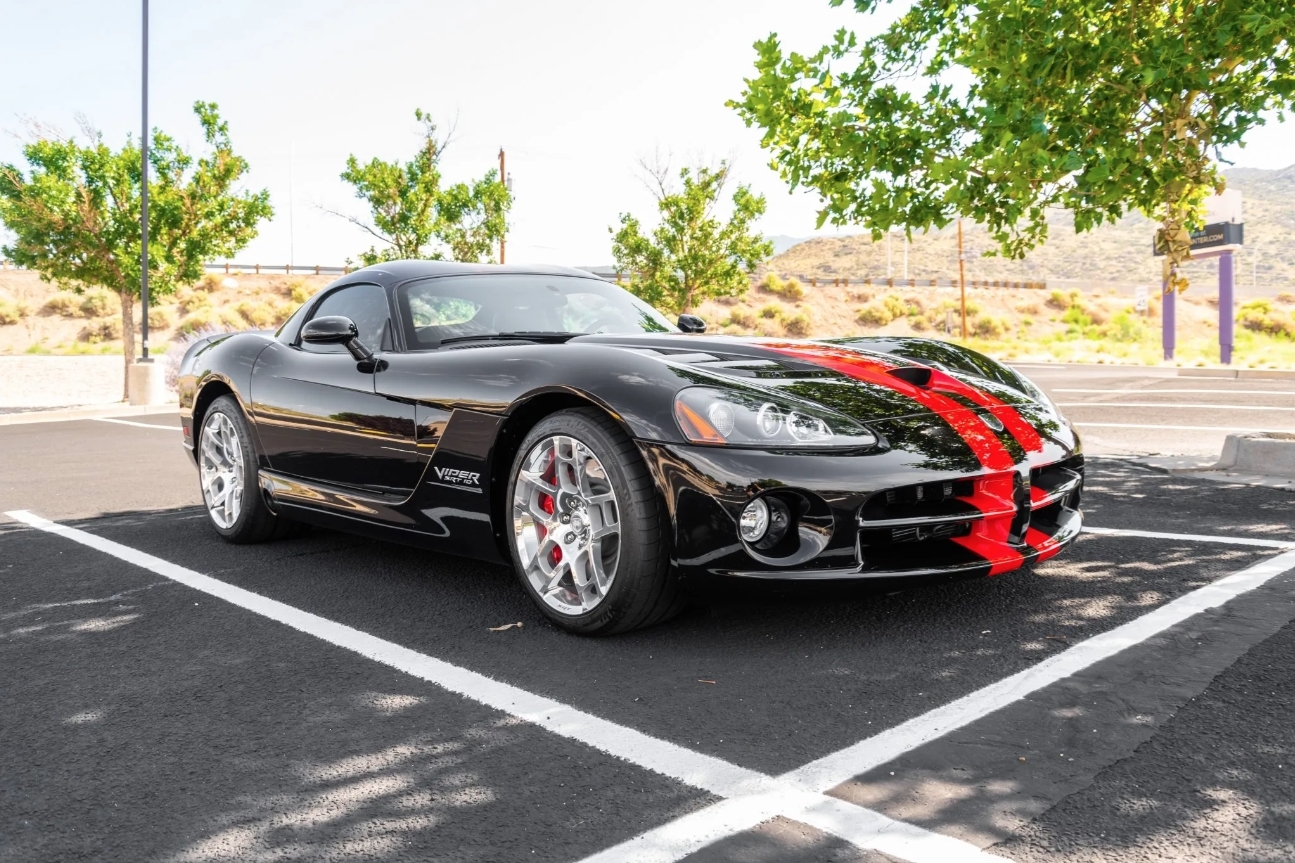
Photo by Bring a Trailer
Aesthetically, the Viper received a redesigned hood with functional vents, enhancing engine cooling and contributing to its aggressive appearance.
The 2008 Dodge Viper SRT-10 had a starting price of $85,545 for the convertible and $86,295 for the coupe.
2009 Dodge Viper
In 2009, the Dodge Viper received notable updates to enhance both safety and exclusivity. A significant advancement was the introduction of a new stability control system, designed to improve driving safety by providing better handling and control, especially under challenging driving conditions.

Photo by Bring a Trailer
Additionally, Dodge released several limited-edition models featuring unique color schemes and interior trims. One such example is the VOI-10 Edition, created to commemorate the 10th Viper Owners Invitational; this edition was limited to 100 units, each adorned in silver with black stripes.
Another special edition was the Hurst 50th Anniversary Edition, with only 50 units produced, distinguished by black paint with gold stripes and unique interior accents. These special editions not only celebrated significant milestones but also offered enthusiasts exclusive options to own a distinctive piece of Viper history.
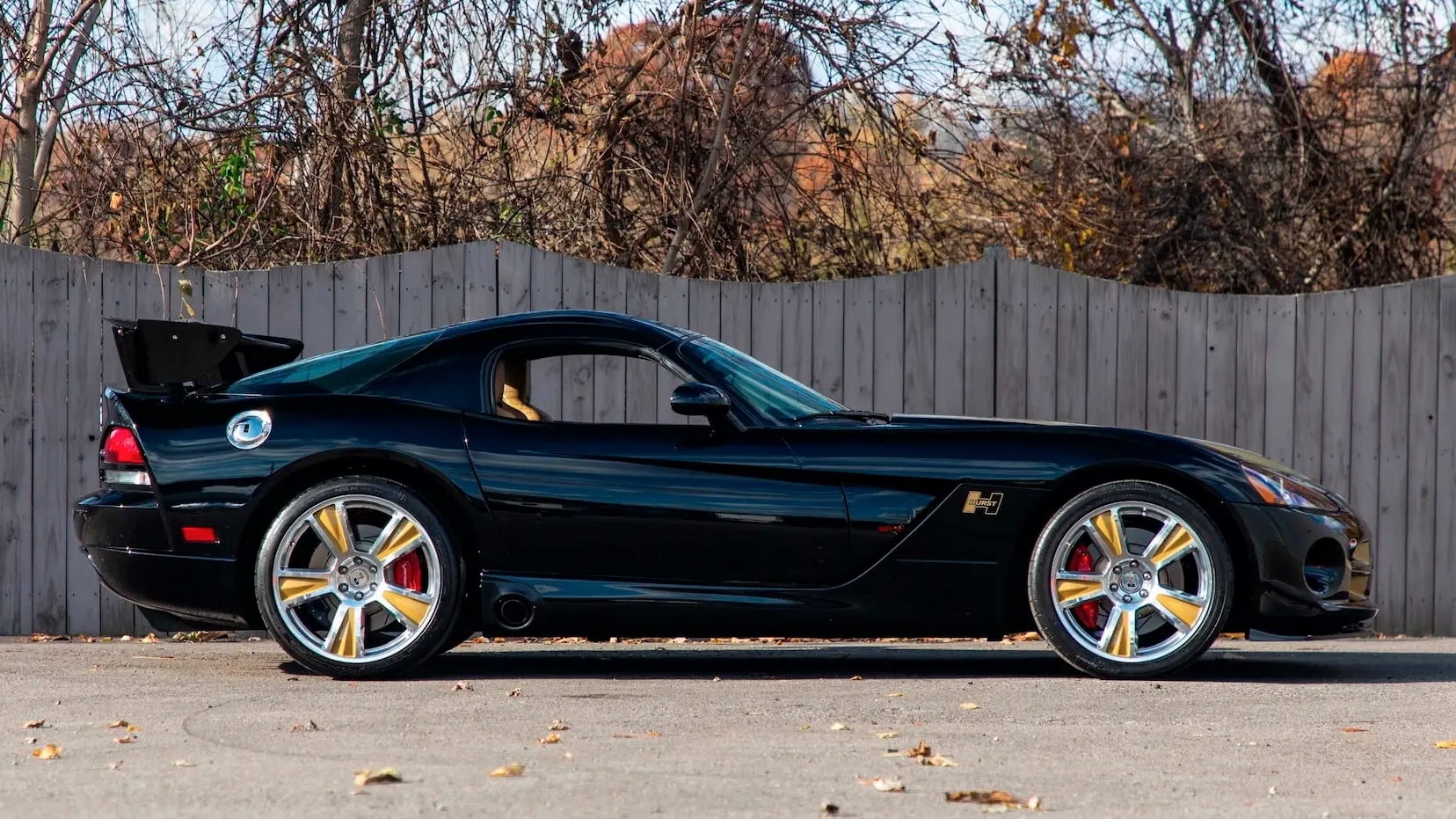
Photo by Mopar Insiders
In 2009, the Dodge Viper lineup featured three primary models: the SRT10 Convertible, starting at $88,755; the SRT10 Coupe, starting at $89,505; and the track-focused SRT10 ACR (American Club Racer), starting at $98,110.
2010 Dodge Viper
In 2010, as the fourth-generation Dodge Viper approached the end of its production run, Dodge commemorated the occasion by releasing several exclusive special editions, each characterized by unique features and limited production numbers.
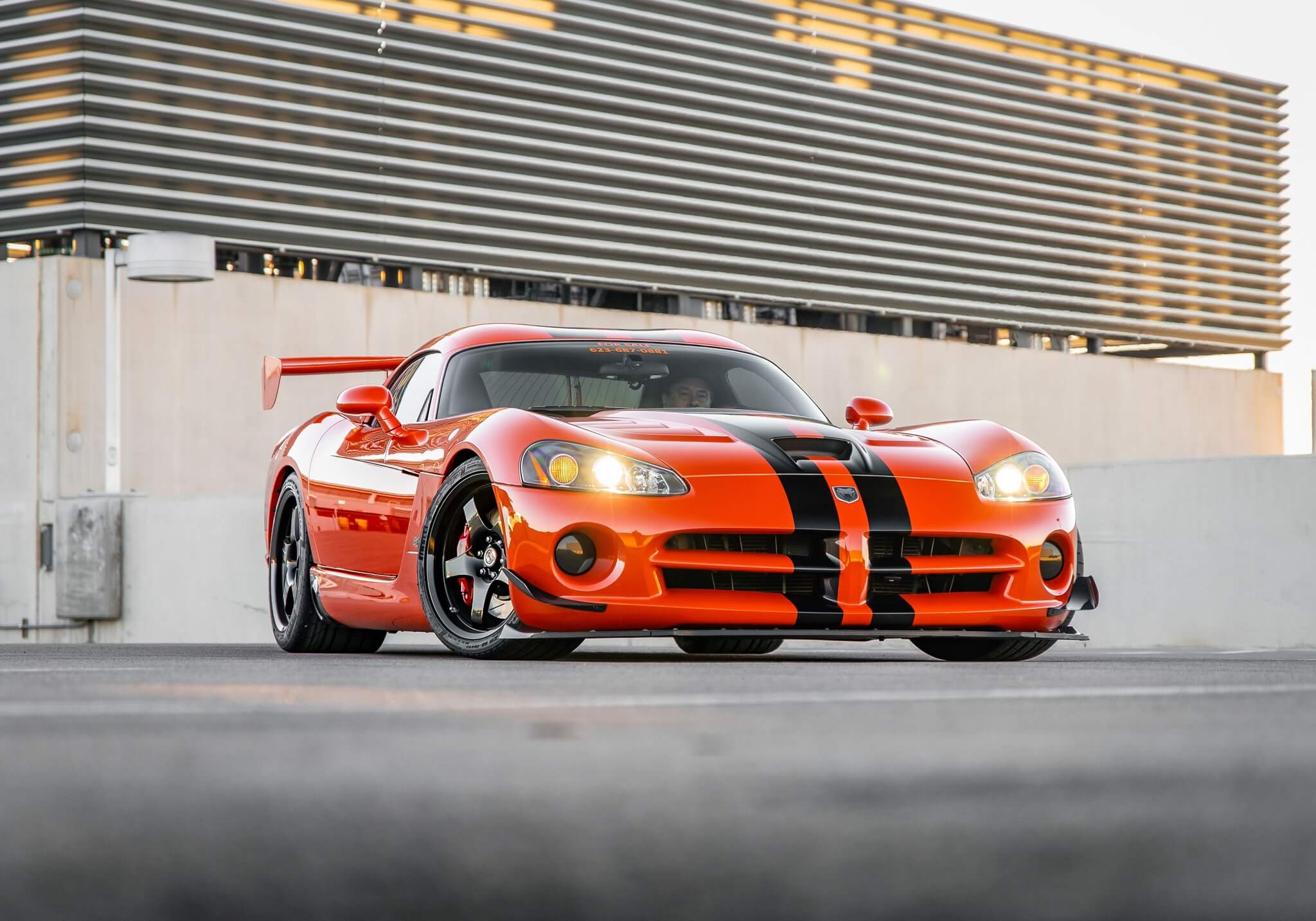
Photo by PCarMarket
One notable example is the Voodoo Edition, which featured an all-black exterior with a graphite driver’s stripe outlined in red, with only 10 units produced. Another significant release was the 1:33 Edition, celebrating the Viper ACR’s record lap time at Laguna Seca Raceway; this model showcased a two-tone black and red color scheme and was limited to 33 units.
Additionally, Dodge offered the Final Edition models, encompassing 20 coupes, 18 roadsters, and 12 ACRs, each distinguished by a graphite clear coat exterior with a painted black center stripe outlined in red.

Photo by Motorious
These special editions not only marked the culmination of the Viper’s fourth generation but also provided enthusiasts with unique variants that celebrated the model’s performance heritage.
In 2010, the Dodge Viper lineup featured the SRT10 Convertible with a base price of $85,995, the SRT10 Coupe starting at $91,005, and the track-oriented SRT10 ACR (American Club Racer) beginning at $98,110.
Dodge Viper Common Problems
The fourth-generation Dodge Viper (2008-2010) is known for its performance and distinctive design; however, potential buyers should be aware of several common issues reported by owners.
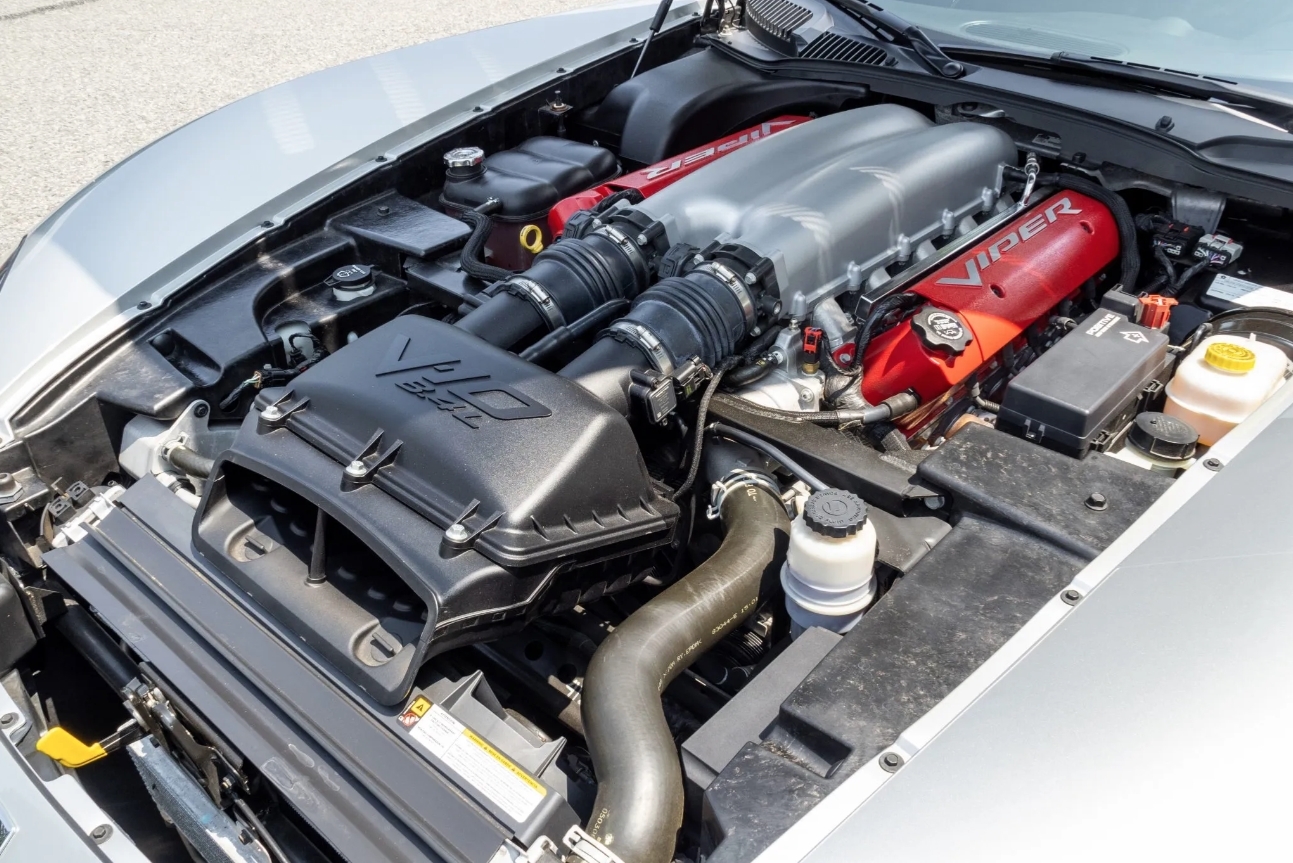
Photo by Bring a Trailer
Despite these concerns, many issues can be addressed through proactive maintenance and thoughtful modifications. Prospective owners should be prepared for the Viper’s raw driving dynamics and ensure they are comfortable with its unique characteristics.
In addition, it is essential to keep in mind that all cars, even supercars, can have issues and it is crucial to perform a Pre-Purchase Inspection (PPI) from an authorized dealer or experienced independent mechanic to reveal all issues.
Cabin Heat: Owners have reported that the cabin can become uncomfortably warm during extended drives. This is often attributed to the exhaust system’s routing and the car’s minimal insulation.
Power Steering and Oil Cooler Lines: The factory-installed power steering return hoses and oil cooler lines are prone to deterioration over time, leading to potential leaks. Upgrading to braided steel lines is a recommended preventive measure.
Engine and Transmission Mounts: Due to their proximity to the exhaust manifolds, the engine and transmission mounts can degrade prematurely from heat exposure, resulting in increased vibration and shifting issues. Regular inspection and timely replacement can mitigate this problem.
Rear Differential Durability: Some owners have experienced rear differential failures around 40,000 miles. Upgrading to a more robust aftermarket differential, such as a Wavetrac or OS Giken unit, can enhance durability and improve handling characteristics.
Cooling System Components: The hydraulic cooling fan solenoid, particularly in the 2004 models, is known to fail, leading to overheating issues. Ensuring the cooling fan operates correctly and replacing faulty components promptly is essential for engine health.
Harmonic Balancer Bolt: There have been instances where the harmonic balancer bolt loosens over time, which can cause engine vibrations and potential damage. Regularly checking the torque of this bolt during maintenance routines is advisable.
Lack of Electronic Driver Aids: The fourth-generation Viper lacks modern electronic stability and traction control systems. While this offers a pure driving experience, it requires drivers to exercise caution, especially in adverse weather conditions, to prevent loss of control.
Recalls
2008 to 2010 Dodge Viper vehicles
Air Bags: Frontal: Driver Side Inflator Module (Recall No. 16V352000)
The driver-side frontal airbag inflator may rupture due to propellant degradation occurring after long-term exposure to high absolute humidity, temperature, and temperature cycling. An inflator rupture could result in metal fragments striking the driver or other occupants, increasing the risk of serious injury or death.
Air Bags: Frontal: Passenger Side Inflator Module (Recall No. 15V046000)
The passenger-side frontal airbag inflator may rupture due to propellant degradation occurring after long-term exposure to high absolute humidity, temperature, and temperature cycling. An inflator rupture could result in metal fragments striking the passenger or other occupants, increasing the risk of serious injury or death.
Air Bags: Frontal: Driver Side Inflator Module (Recall No. 15V313000)
Similar to Recall No. 16V352000, this recall addresses the potential rupture of the driver-side frontal airbag inflator due to propellant degradation after prolonged exposure to high absolute humidity, temperature, and temperature cycling. An inflator rupture may result in metal fragments striking the driver or other occupants, posing a risk of serious injury or death.
Owners of affected vehicles were notified by FCA US LLC and advised to bring their vehicles to authorized dealers for the necessary repairs, which typically involved replacing the defective airbag inflators with updated components.
Maintenance and Ownership Costs
Owning a Dodge Viper requires following a consistent maintenance schedule to maintain its exceptional performance and durability. Despite the Viper’s reputation for being fairly reliable, regular upkeep is crucial. Maintenance expenses can differ based on whether services are conducted at a dealership or by an independent mechanic.
Here are the suggested service schedule and intervals per Dodge:
Every 3,000 Miles / 6 Months:
-
Replace engine oil and oil filter
-
Inspect brake system, including pads, rotors, and lines
-
Check and adjust all fluid levels (coolant, brake, clutch, power steering)
-
Inspect tires for wear and correct pressure
-
Examine belts and hoses for signs of wear or damage
Every 6,000 Miles / 12 Months:
-
Perform all 3,000-mile services
-
Rotate tires
-
Inspect suspension and steering components
-
Examine exhaust system for leaks or damage
-
Check battery condition and clean terminals
Every 12,000 Miles / 24 Months:
-
Perform all 6,000-mile services
-
Replace engine air filter
-
Flush and replace brake fluid
-
Inspect and replace cabin air filter (if equipped)
-
Check alignment and adjust if necessary
Every 30,000 Miles / 36 Months:
-
Perform all 12,000-mile services
-
Replace transmission fluid
-
Replace differential fluid
-
Flush and replace engine coolant
-
Inspect fuel system and replace fuel filter
Additional Recommendations:
-
Spark Plugs: Replace every 30,000 miles.
-
Timing Components: Inspect regularly; replace as needed.
-
Clutch Hydraulic Fluid: Check every 6 months; replace every 12 months.
Here is a rough estimate of typical service costs associated with the Dodge Viper:
-
Oil Change – The Dodge Viper requires high-quality synthetic oil to maintain optimal engine performance. An oil change typically costs between $120 and $200 at a dealership, while independent shops may charge between $100 and $150.
-
Minor Service – Minor services, including oil changes, fluid top-offs, and general inspections, are usually performed every 5,000 to 7,500 miles. The cost for a minor service generally ranges from $200 to $400 at dealerships, and $150 to $300 at independent shops.
-
Major Service – Major services, which involve comprehensive inspections, spark plug replacements, brake fluid changes, and other preventive maintenance, are recommended every 30,000 to 50,000 miles. The cost for major service typically ranges from $1,000 to $1,500 at dealerships, and $800 to $1,200 at independent shops.
-
Tires – The Viper uses high-performance tires that wear more quickly due to the car’s aggressive handling capabilities. A set of four high-performance tires such as Toyo Proxes R888R and the Michelin Pilot Sport Cup 2 generally costs between $1,500 and $2,500, depending on the brand and specifications.
-
Brakes – The Viper’s high-performance braking system can lead to increased wear during spirited driving or track use. Replacing the brake pads and rotors can cost between $1,500 and $2,000 for all four corners at a dealership, and $1,200 to $1,800 at an independent shop.
-
Clutch – Replacing the clutch on the Viper can be a significant expense due to the labor-intensive nature of the job. A clutch replacement typically costs between $2,000 and $3,000 at a dealership, and $1,500 to $2,500 at an independent shop.
Options List
The fourth-generation Dodge Viper (2008-2010) offered a range of options that allowed buyers to personalize their vehicles to their preferences.
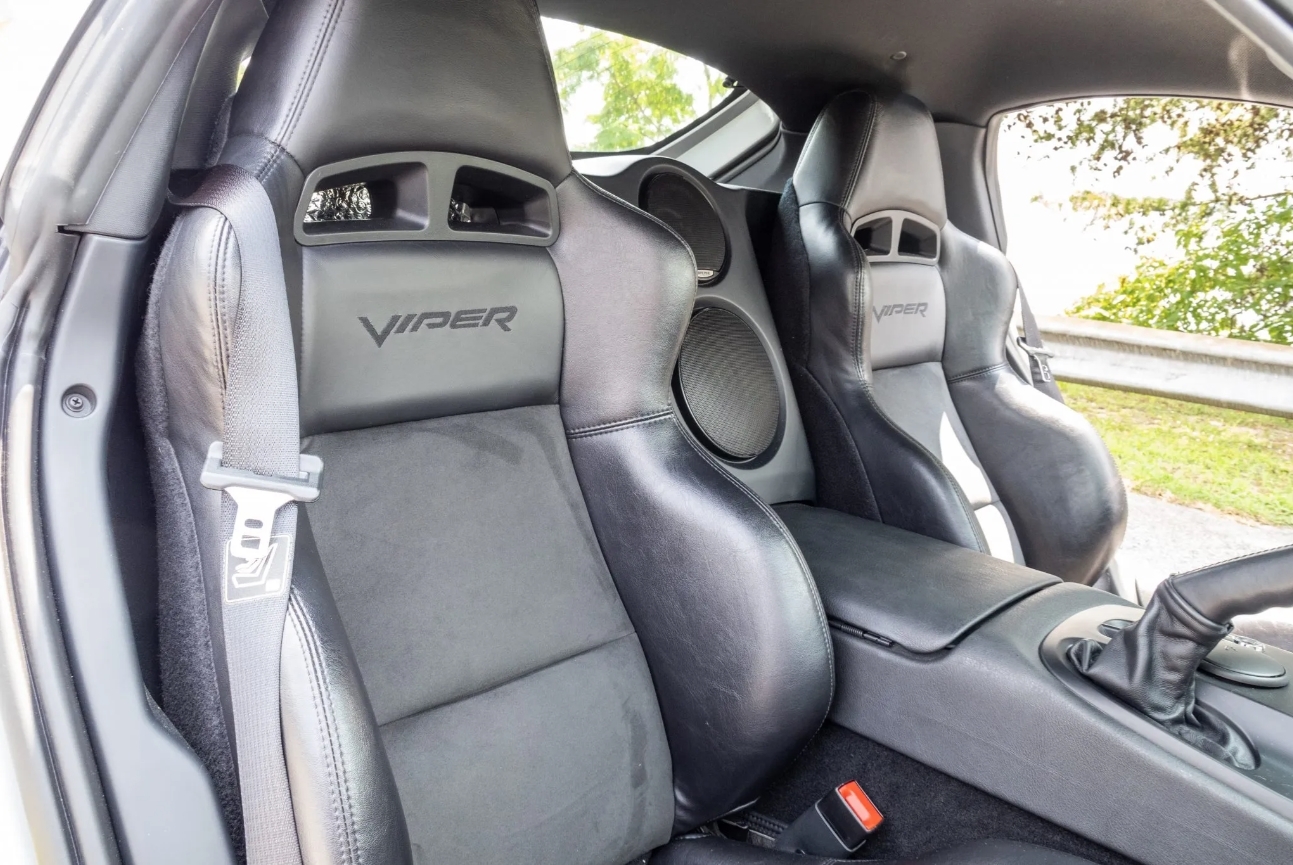
Photo by Bring a Trailer
Exterior color choices included striking hues such as Venom Red, Snakeskin Green, Viper Violet, and Viper Orange. For those seeking a classic racing aesthetic, dual painted stripes were available, enhancing the Viper’s aggressive design.
Inside, various trim packages allowed for customization of materials and finishes, tailoring the cabin to individual tastes. An optional premium audio system catered to audiophiles desiring an enhanced in-car listening experience.
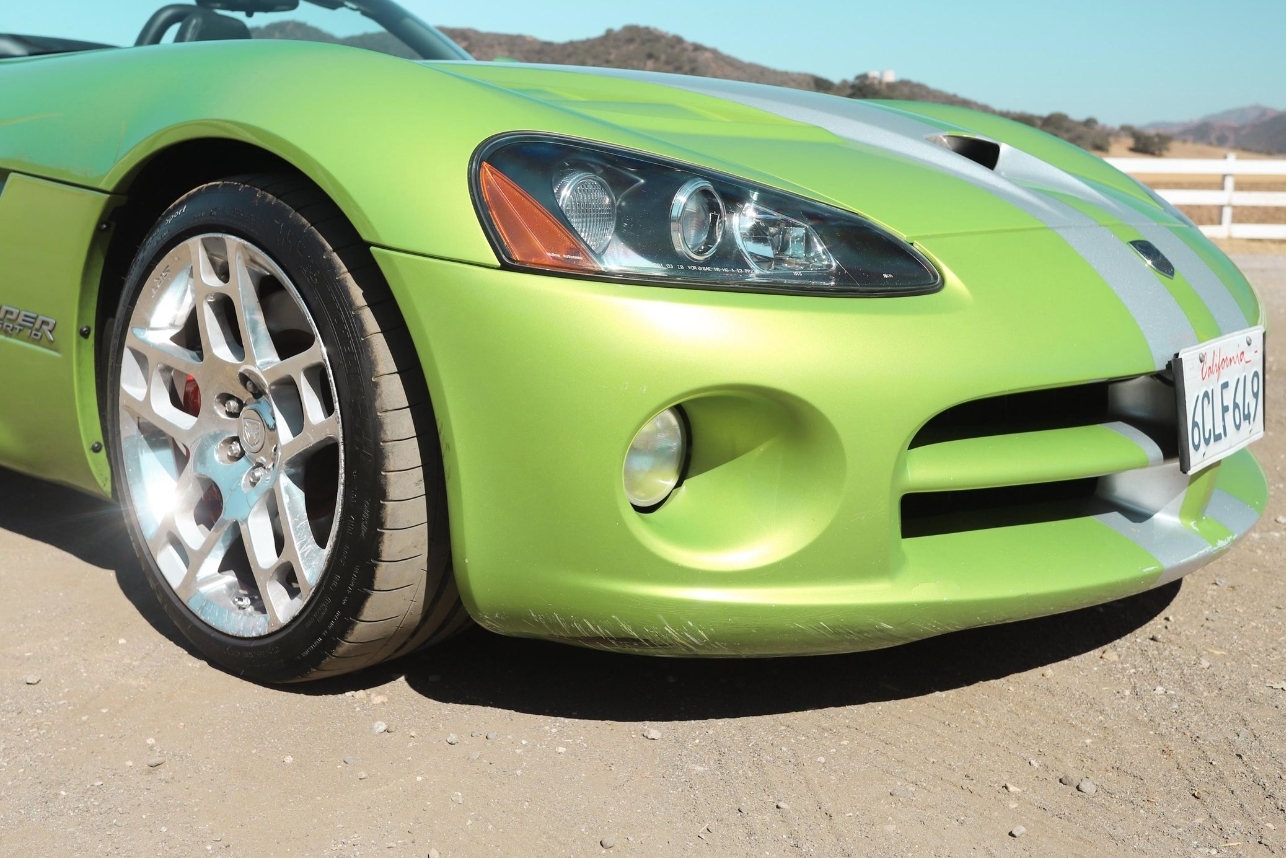
Photo by Bring a Trailer
Performance enthusiasts could opt for the track-focused SRT-10 ACR (American Club Racer) variant, which featured a track-tuned suspension system with adjustable coil-over racing dampers from KW Suspensions, designed for superior handling on the racetrack.
Aerodynamic enhancements on the ACR included a carbon fiber front splitter, front canards, and an adjustable carbon fiber rear wing, contributing to increased downforce and stability at high speeds.
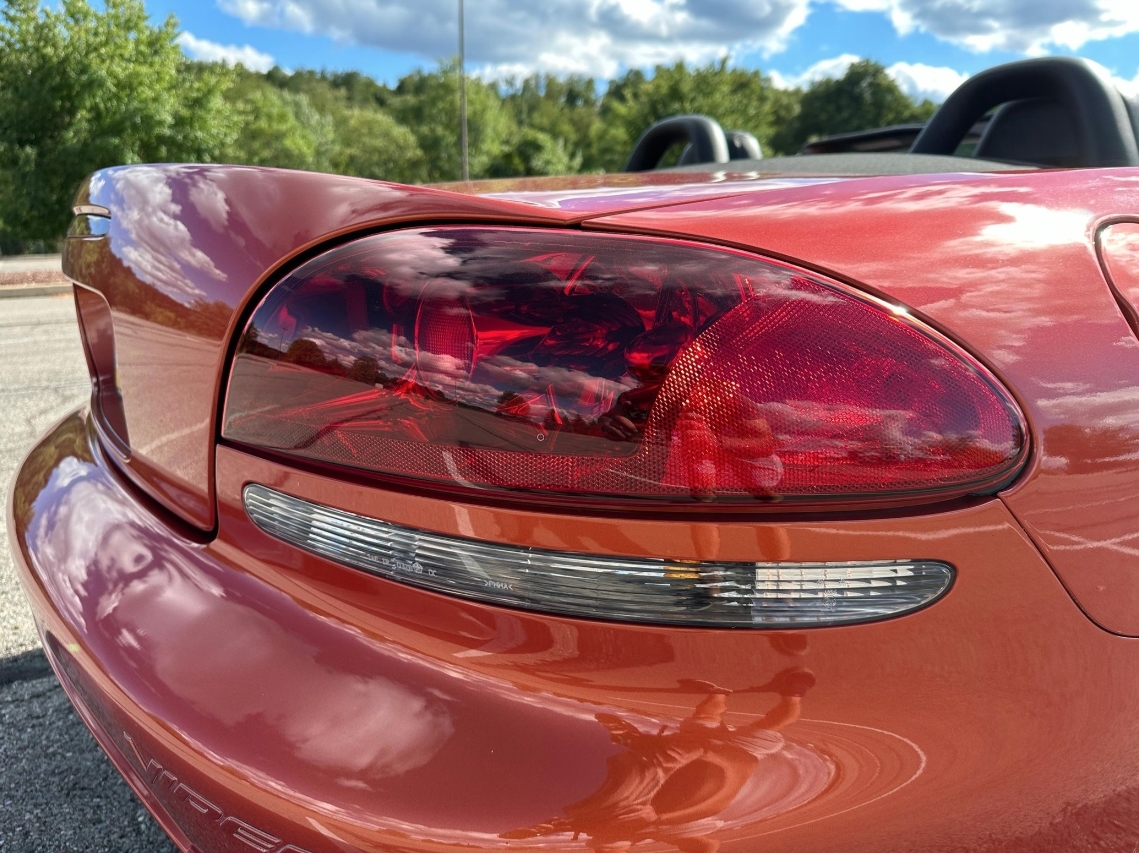
Photo by Cars and Bids
Additionally, Dodge released several limited-run special editions during this generation, each with unique features. The Voodoo Edition, limited to 31 units, featured special black paint and red striping, along with a unique interior and steering wheel.
The 1:33 Edition commemorated a lap record at Mazda Raceway Laguna Seca and had a distinctive black and red two-tone paint scheme, piano black interior trim, and red accent stitching on the seats.
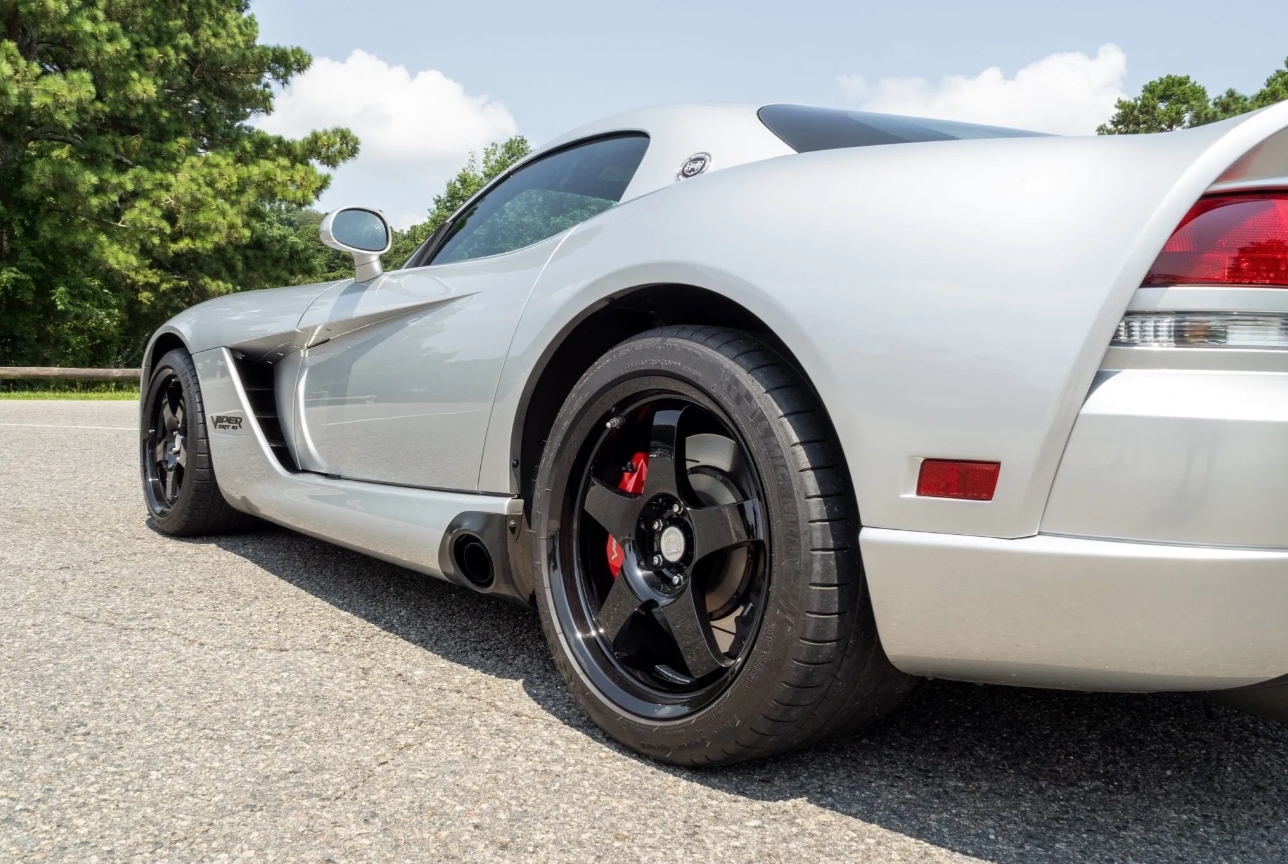
Photo by Bring a Trailer
The Final Edition marked the end of the fourth-generation Viper’s production and was limited to 50 cars (20 coupes, 18 roadsters, and 12 ACRs), each featuring a graphite clear coat exterior with a painted black center stripe outlined in red.
These options and special editions provided buyers with the ability to tailor the Viper to their individual tastes, enhancing the vehicle’s exclusivity and performance capabilities.
2010 Dodge Viper options list
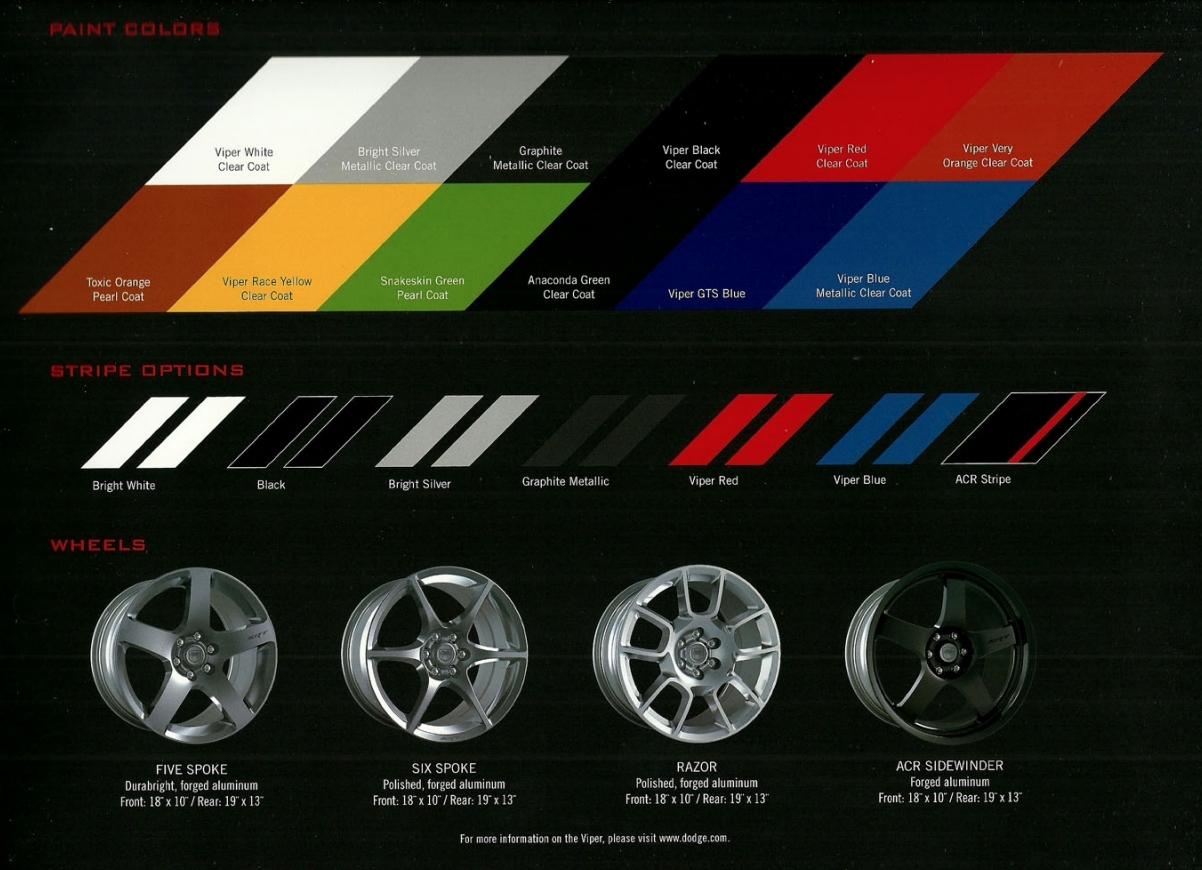
Key Options
-
ACR Package (Adjustable suspension, aerodynamic enhancements, and lightweight components)
-
Dual Painted Stripes
-
Premium Audio System
-
Special Edition Exterior Colors (Voodoo, Snakeskin Green, Venom Red, etc.)
-
Lightweight Forged Wheels
The Best Dodge Viper Fourth Generation to Buy
When selecting the optimal fourth-generation Dodge Viper (2008-2010), several factors can guide your decision, including model year refinements, performance features, and the vehicle’s overall condition.
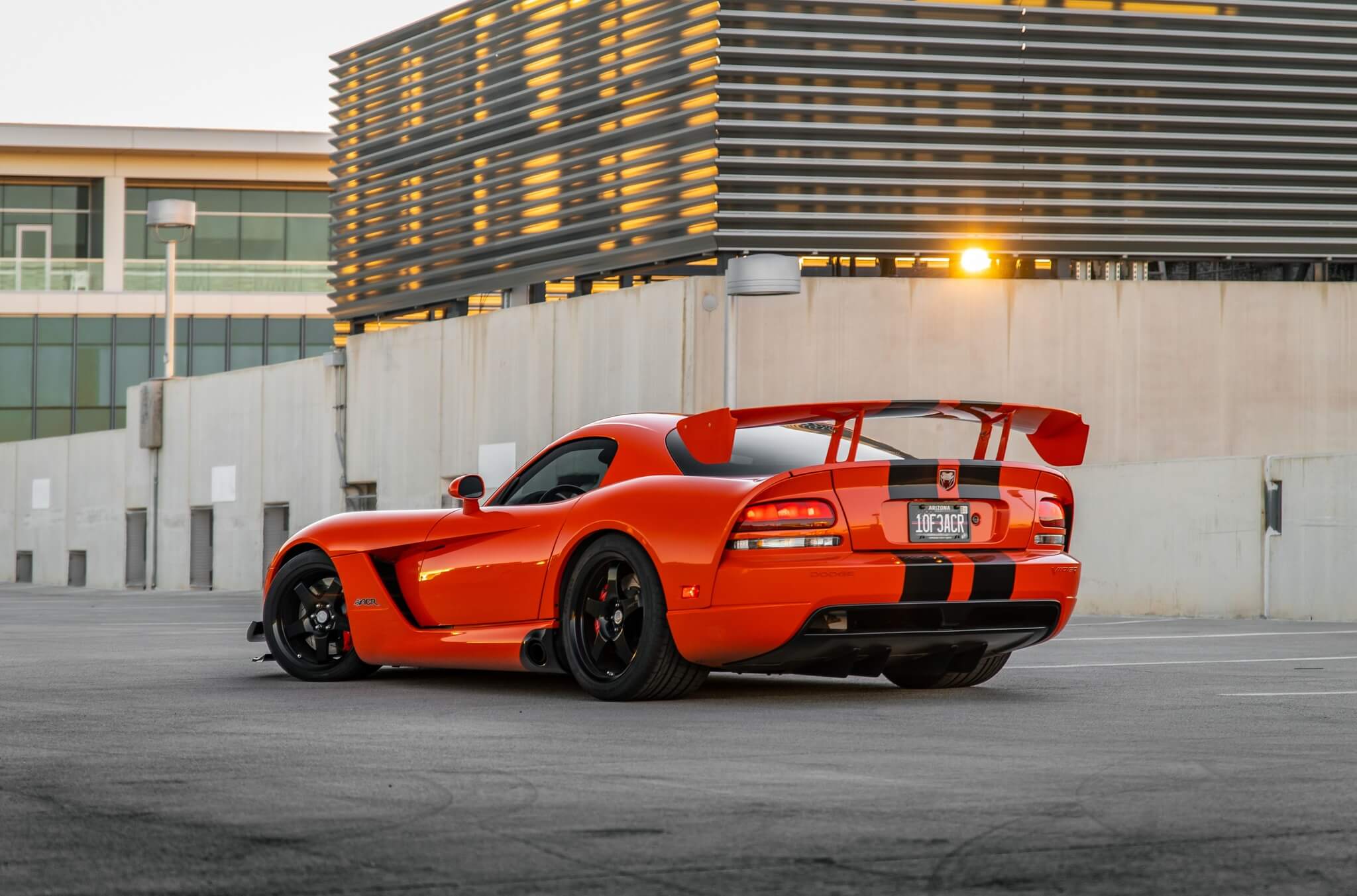
Photo by PCarMarket
The 2010 model year stands out as a particularly solid choice. As the final year of the fourth generation, the 2010 Viper benefits from all the incremental updates and refinements made throughout its production run. This includes enhancements in build quality and the availability of exclusive special editions, such as the limited-run Final Edition models, which are highly sought after by collectors.
For those seeking a track-focused experience, the Viper SRT-10 ACR (American Club Racer) variant is noteworthy. Introduced during this generation, the ACR features aerodynamic enhancements, a track-tuned suspension, and weight-saving measures, resulting in a vehicle that excels in high-performance driving scenarios.
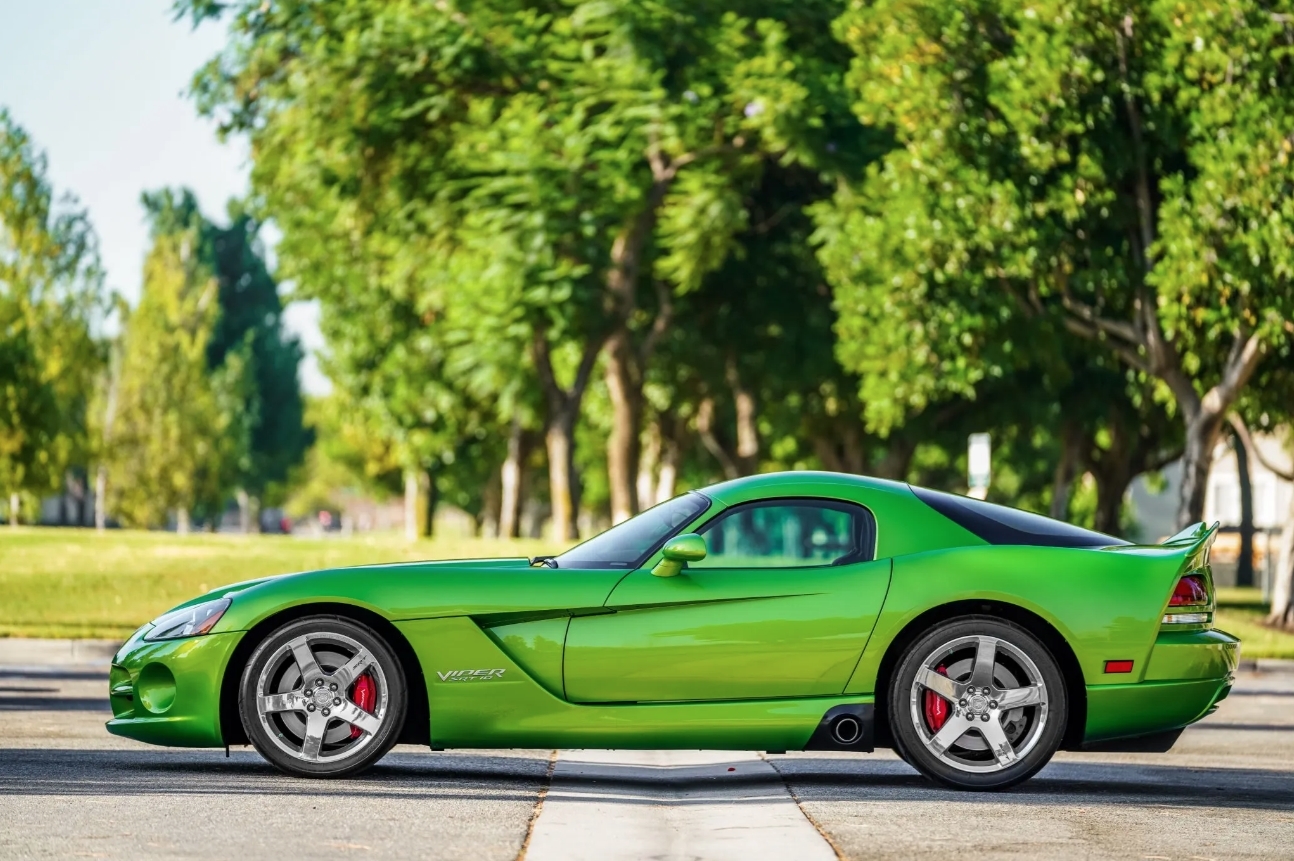
Photo by Bring a Trailer
In regards to market stability, model years 2008 to 2010 should be safe across the board as long as you find the right example.
In addition to model selection, the condition and mileage of the vehicle are crucial considerations. Well-maintained Vipers with lower mileage are more likely to retain their value and provide a more reliable ownership experience. It’s advisable to conduct thorough research, compare prices, and seek vehicles with comprehensive service histories.
Therefore, evaluating your specific needs, preferences, and budget is essential when selecting a fourth-generation Viper.
Conclusion
In summary, with a starting price of approximately $100,000+, the fourth-generation Dodge Viper (2008-2010) offers an exciting experience for enthusiasts seeking a high-performance sports car. Its aggressive design and potent V10 engine deliver a unique blend of raw power and striking aesthetics.
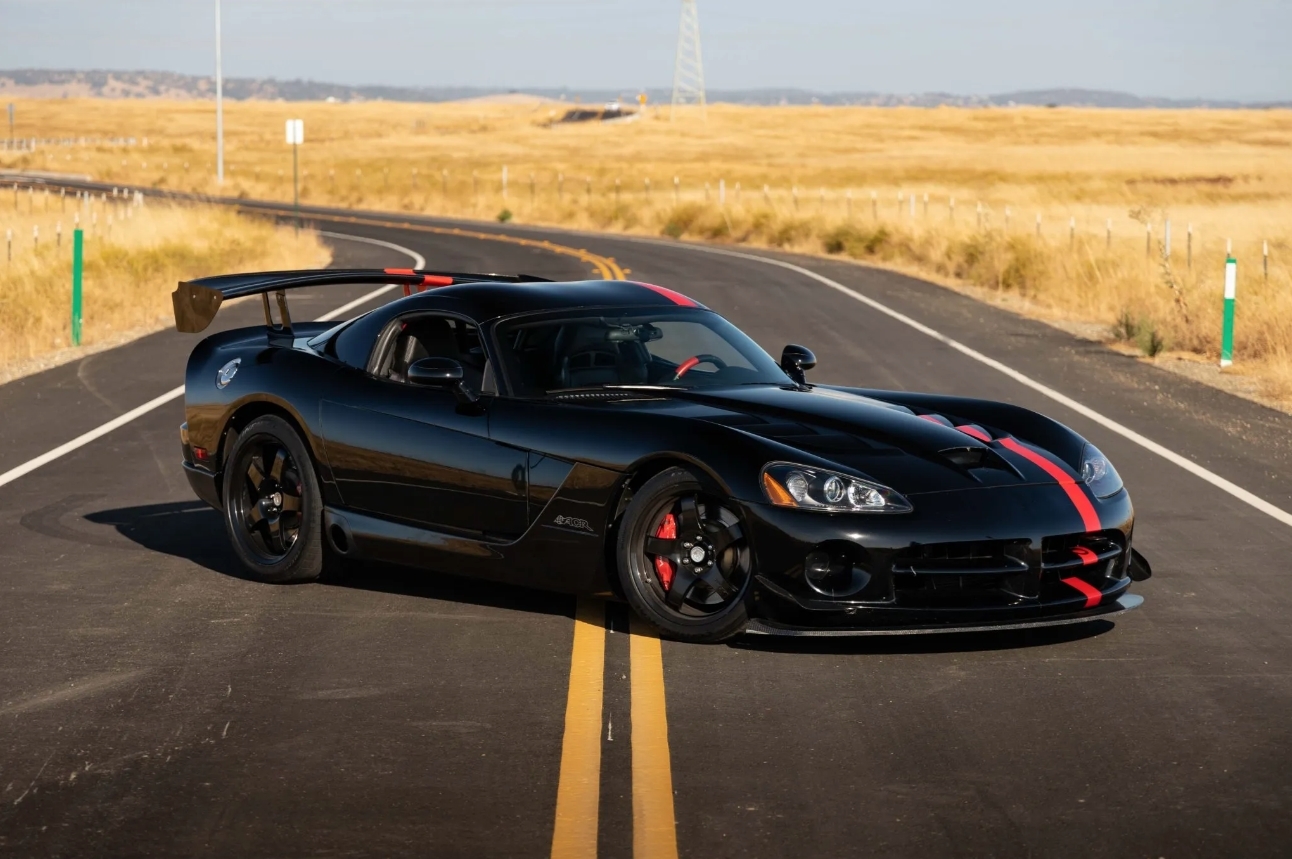
Photo by Bring a Trailer
While alternatives like the Chevrolet Corvette Z06, Nissan GT-R and Porsche 911 GT3 exist, the Viper distinguishes itself through its uncompromising driving dynamics and iconic American muscle heritage.
For those desiring a pure, unfiltered driving experience, the fourth-generation Dodge Viper remains an exceptional choice.
Car Hacking Shortcuts
-
Look for models equipped with the ACR Package for track-focused performance, which includes adjustable suspension, aerodynamic enhancements, and weight-saving components
-
Opt for limited-edition models like the Voodoo Edition, 1:33 Edition, or Final Edition for exclusivity and higher long-term value
-
Prioritize low-mileage, well-maintained vehicles with a comprehensive service history to ensure reliability and better resale potential
Resources
- 2010 Dodge Viper Brochure PDF
The post Dodge Viper Fourth-Generation Buyers Guide first appeared on Exotic Car Hacks.
The post Dodge Viper Fourth-Generation Buyers Guide appeared first on Exotic Car Hacks.

